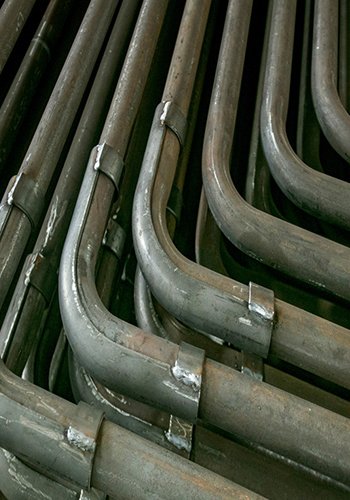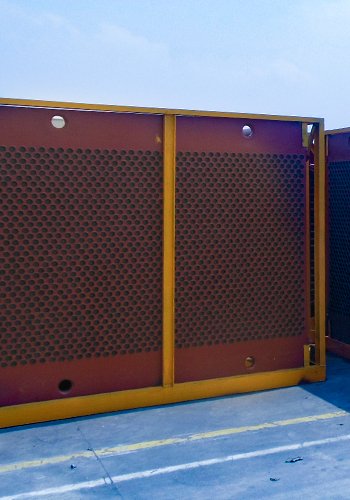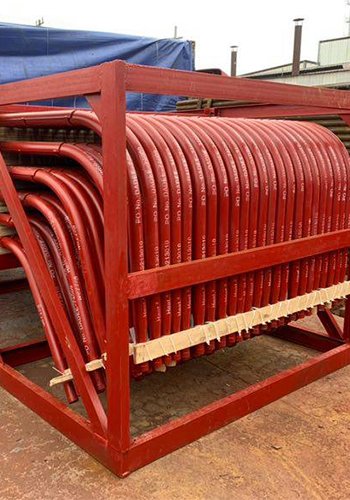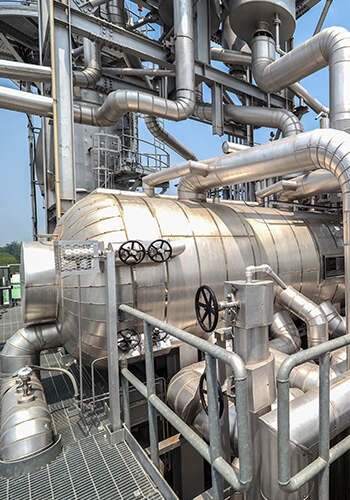Within the framework of advancing the developmental standards of chemical enterprises, the operational demands for circulating fluidized bed boilers (CFB boiler) have attained a heightened significance. It is imperative for personnel to fortify their proficiency in the operation and administration of CFB boiler. This entails a comprehensive comprehension of the operational protocols governing these boilers, enabling adept adjustments of boiler operation parameters and slag cooler functionality. Such an intricate grasp of circulating fluidized bed boiler operations culminates in an elevated management acumen, thereby fostering enhanced combustion efficiency and consequently augmenting economic yield.
Current State of Circulating Fluidized Bed Boiler Operations
1.1 Challenges in Operational Stability
During the operational phase of a circulating fluidized bed boiler, insufficient natural gas supply can necessitate prolonged operation at low load levels. This predicament exposes the limited flexibility of CFB boiler and gives rise to potential issues of operational control loss. In instances where the boiler operates in a low-load state, irregular fluidization and unstable combustion may manifest. Consequently, it becomes imperative for personnel to meticulously uphold furnace temperature stability, ensuring comprehensive combustion within the boiler system. This proactive measure mitigates the risk of anomalous operational behavior and suspended operations. The magnitude of temperature directly influences the combustion material’s characteristics, with controllable parameters chiefly encompassing material layer differential pressure and fluidization air volume.
1.2 Thermal Erosion of Water-Cooled Wall Tubes
Throughout the operation of a circulating fluidized bed boiler, the presence of relatively large particles below the furnace and their heightened concentration can precipitate consequential effects. Under the influences of gravity, airflow, and friction, these sizable material particles traverse the water-cooled wall pipes. This traversal engenders direct friction between the circulating fluidized bed boiler and the water-cooled wall pipe, consequently exacerbating the wear on the heat surface of the water-cooled wall pipe. Moreover, as the fuel volume within the circulating fluidized bed boiler augments, the propensity for wear on the boiler tube wall intensifies. This heightened wear on the tube wall renders the boiler vulnerable to tube bursting, thereby necessitating an immediate system suspension upon the emergence of alarm signals.
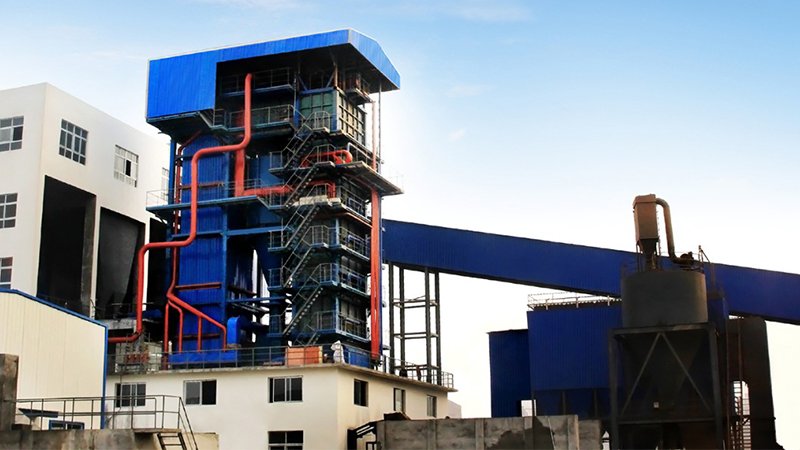
Strategies for Enhancing the Operation Cycle of CFB boilers.
2.1 Reinforce Preemptive Management
In the pursuit of bolstering the preemptive management of CFB boiler, a concerted effort should be directed towards scrutinizing diverse factors that wield influence over the operation cycle. This proactive approach aims to avert latent hazards from exerting direct repercussions on boiler operation. Within the domain of preemptive management, a comprehensive focus should be placed on enhancing supervision over the boiler’s operational milieu and human involvement. Continual optimization and refinement of circulating fluidized bed operations remain pivotal, underscoring the importance of endowing CFB boiler with energy-efficient and ecologically mindful attributes.
To effectively cater to the exigencies of boiler requirements, chemical enterprises are well-advised to designate seasoned personnel to oversee the management of CFB boiler. This measure ensures the prompt rectification of deviations that fall short of requisite standards, thus engendering an elevated caliber in boiler production.
Prior to the departure of a circulating fluidized bed boiler from the manufacturing facility, it is judicious to compile a comprehensive inspection report. This practice engenders post-factory operational normalcy and significantly contributes to the amplification of the boiler’s operation cycle. Chemical enterprises should predefine production and processing norms for CFB boiler, centering efforts on refining the standardization of installation procedures. Stringent controls on the processing dimensions and production parameters of CFB boiler are indispensable, as they preclude the emergence of deformations consequent to production discrepancies.
Concurrently, personnel ought to diligently regulate the production sequencing of CFB boiler while prudently allocating refractory materials. This dual-pronged approach ensures the alignment of boiler production with prevailing market requisites. Notably, amidst the vigorous competition in the refractory materials sector, chemical enterprises must accentuate the production facet of refractory materials. The procurement process merits meticulous scrutiny, prioritizing the acquisition of premium-grade refractory materials to preclude operational disruptions arising from suboptimal material deployment.
Mechanical installation quality warrants stringent evaluation, culminating in preoperative trials to ascertain the suitability of equipment. Such rigorous assessments validate the operational readiness of the circulating fluidized bed boiler, with particular attention directed towards the establishment of its rotational orientation. This endeavor ensures the perpetual maintenance of the boiler’s operational normalcy.
2.2 Augment Boiler Water Management
2.2.1 Initiate Furnace Chamber Ignition Procedure
Primarily, personnel should execute the ignition operation within the furnace chamber, ensuring a gradual elevation of water temperature to the boiling point. Subsequently, the removal of steam presence at the gate is essential. By meticulously controlling the furnace water’s boiling duration for a span of 8 to 12 hours, pressure reduction can be orchestrated to reach 0.1 MPa, with a pressure rise threshold set at 0.3 to 0.5 MPa. This procedure facilitates the sustained maintenance of water within the circulating fluidized bed boiler at the rated pressure of 2.87 MPa, thus establishing a conducive milieu for the execution of water-related operations.
2.2.2 Stringent Water Quality Assurance and Alkaline Cooking
Ensuring compliance with stipulated water quality standards remains a paramount prerequisite. Upon confirming the water’s alignment with the required criteria, the heating and pressurization endeavors of the circulating fluidized bed boiler should be temporarily suspended. Subsequent to an alkaline cooking phase, the prompt elimination of alkaline cooking fluids from the circulating fluidized bed boiler is warranted. Concurrently, meticulous scrutiny of water-side bubbles within the boiler pressure elements is imperative. Expedited elimination of internal scales and residues from the circulating fluidized bed boiler tank is of utmost significance, effectively curtailing the potential elongation of the circulating fluidized bed boiler’s operation cycle.
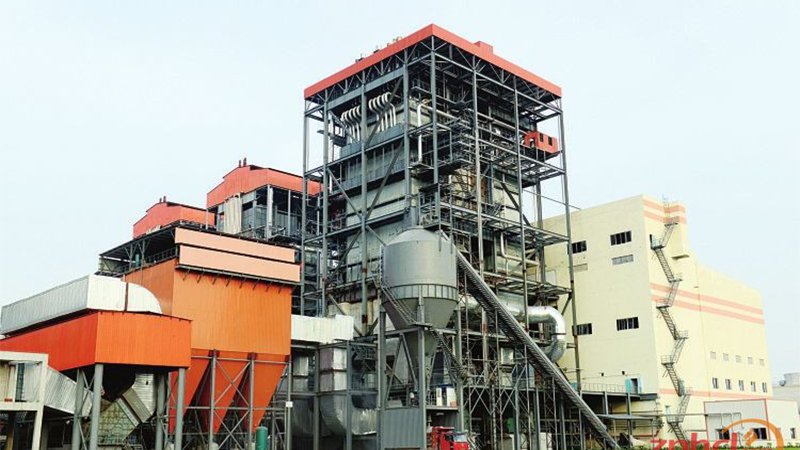
2.3 Adhere to Standardized Boiler Installation Practices
2.3.1 Elevated Environmental Considerations and Quality Control
Amidst China’s heightened emphasis on environmental preservation, managerial stakeholders must exercise vigilant control over boiler equipment quality. Rigorous assessments should be conducted to ascertain the presence of pressure-bearing or wear-prone components within the circulating fluidized bed boiler. A meticulous scrutiny of factory reports and pertinent cultural information complements these efforts, culminating in an enhanced quality of boiler equipment. This proactive approach bolsters safety provisions by fortifying the long-term operational integrity of the equipment.
2.3.2 Conformity to Installation Standards
During the installation of CFB boiler, adherence to standardized requisites is pivotal. Particular attention must be directed towards meticulous sizing and the judicious incorporation of expansion joints. Given the substantial thermal expansion coefficients intrinsic to steel parameters within power plant boilers, a conscientious focus on minimizing the potential for excessive localized stress concentration is indispensable. This approach mitigates the likelihood of deformation and structural compromise. Hence, personnel should diligently execute installation procedures in alignment with established protocols.
2.3.3 Prudent Refractory Material Selection and Procedural Care
Prior to the selection of refractory materials, a systematic pre-demonstration is imperative. This prescient exercise forestalls the plausible imposition of operational cycle disruptions stemming from the erroneous choice of refractory materials. Upon the completion of oven baking procedures, personnel should conscientiously employ an outer shield. Provisioning for strategically positioned vent holes directly above the shield is advised, facilitating the timely expulsion of internal boiler water vapor. This precautionary measure further contributes to the perpetuation of unimpeded boiler functionality.
2.4 Enhance Furnace Coal Control
2.4.1 Prerequisite Familiarity with Fluidized Bed Boiler Dynamics
In the realm of utilizing CFB boiler, it is imperative for personnel to attain a comprehensive comprehension of the boiler’s performance attributes, as well as its operational protocols. Mastery over boiler operating parameters is pivotal, serving as the bedrock for the augmentation of boiler operation and management proficiency.
2.4.2 Optimal Coal Selection for Enhanced Performance
During the operation of CFB boiler, the choice of coal assumes paramount importance. The utilization of high-quality coal for combustion distinctly augments the operational cycle, concomitant with an elevation in economic yield. Nonetheless, a judicious approach is requisite, refraining from the deployment of excessively large coal particles or those exhibiting a pronounced frothing tendency into the furnace. This meticulous coal selection strategy aligns with the pursuit of sustained operational efficiency and longevity.
2.5 Regulate Circulating Fluidized Bed Air Volume
2.5.1 Crucial Influence of Air Volume on Operational Dynamics
In the course of circulating fluidized bed boiler operations, the combustion of high-temperature materials suspended in a fluidized state is a dynamic process. The magnitude of the air volume directly governs the safe continuity of boiler operations. To fortify the safety margin of boiler operation, a judicious approach is often taken, involving the utilization of substantial air volume during operation. However, it is imperative to acknowledge that this practice, while augmenting operational safety, can concurrently contribute to heightened wear and tear on the boiler components. This augmented wear is juxtaposed with an escalation in power loss. Notably, this operational dynamic bears the latent risk of promoting coking within the boiler structure. As a result, meticulous attention to air volume control becomes an imperative facet of operational oversight.
2.5.2 Strategic Air Volume Management for Optimal Performance
To preclude the unwarranted complications arising from excess wear, power loss, and coking, personnel must diligently bolster their efforts in air volume control throughout the operational phases of the circulating fluidized bed boiler. This proactive approach ensures a balanced equilibrium between operational safety and efficiency, epitomizing a judicious allocation of air resources that underpins sustained boiler performance.
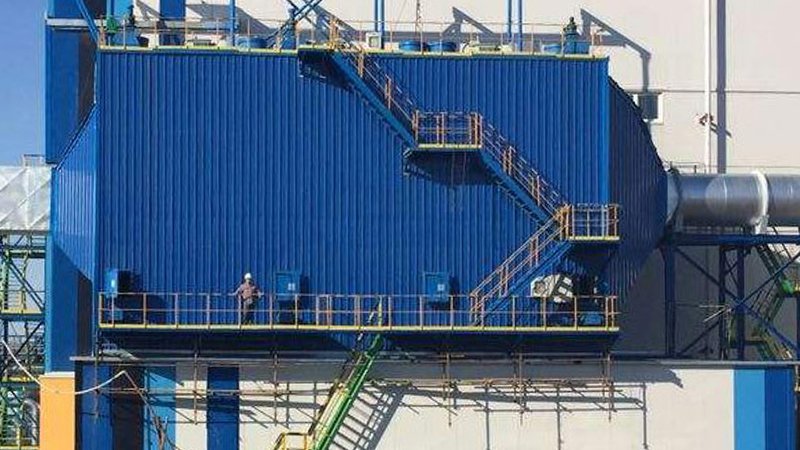
2.6 Enhance Control over Bed Temperature and Bed Material Thickness
2.6.1 Bed Temperature’s Crucial Role
The optimal maintenance of bed temperature within the boiler significantly influences its secure operational state. Bed temperature has a direct bearing on both desulfurization efficiency and nitrogen dioxide emissions. Elevated bed temperatures can undermine desulfurization efficiency and elevate nitrogen dioxide output, potentially resulting in boiler bed coking issues. Conversely, lower bed temperatures contribute to a gradual decline in boiler efficiency and operational instability. The intrinsic significance of bed temperature is evident, positioning it as a pivotal operational parameter for CFB boiler. The optimal bed temperature is situated at approximately 85.6 ℃.
2.6.2 Bed Material Thickness and Operational Stability
Bed material thickness holds an indispensable correlation with the enduring safe operation of the boiler. A material layer that is excessively thin not only fails to meet load requisites but also permits primary airflow to permeate the layer, extinguishing furnace flames. Conversely, an overly thick material layer impinges on primary airflow diffusion, hampering the material’s attainment of full vulcanization. Thus, bed material thickness plays a definitive role in establishing operational efficiency and sustained stability.
2.6.3 Synthesis of Temperature and Thickness Control
The meticulous orchestration of bed temperature and bed material thickness embodies an intricate equilibrium. By precisely calibrating these parameters, boiler operations can achieve an optimal amalgamation of safety, efficiency, and durability. This harmonious interplay is instrumental in averting both thermal inefficiencies and structural imbalances, fostering a cohesive operational milieu.
2.7 Intensify Load Control
2.7.1 Prudent Management of Boiler Load
In the context of CFB boiler, operational engagement in overload states precipitates prolonged operation cycles. This extended duration culminates in an augmented production of sulfides, subsequently propelling the boiler into elevated temperature realms. This escalation in temperature heightens the susceptibility to post-combustion complications, thereby escalating the propensity for coking concerns within the reclaimer. In dire instances, the overall safety of the boiler’s operational conduct might become directly imperiled.
2.7.2 Optimal Load Calibration
Attaining a calibrated equilibrium within the operational load proves pivotal. Personnel must judiciously regulate the load imposed upon the circulating fluidized bed boiler, ideally adhering to a range of 80% to 90% of the rated load. This calculated load range engenders multifaceted benefits, bolstering operational efficiency, mitigating wear and tear repercussions, amplifying operational stability, and inherently fostering an extended operational cycle.
By meticulously managing the load within this specified range, the boiler operates in a domain characterized by elevated efficiency and minimized operational disruptions. The holistic outcome is a protracted operational cycle, reinforcing the longevity and dependability of the circulating fluidized bed boiler.
2.8 Fine-Tune Boiler Operating Parameters
2.8.1 Guided Parameter Adjustment
Personnel should meticulously align parameter adjustments with the fundamental tenets of boiler combustion. A paramount emphasis must be directed towards vigilantly controlling material layer differential pressure. This directive necessitates astute modulation of boiler operating parameters pertaining to evaporation, fluidization air volume, and furnace differential pressure.
2.8.2 Differential Pressure Impact and Adjustments
During instances of elevated material layer differential pressure, the judicious application of augmented fluidization air volume assumes precedence. This dynamic equilibrium warrants recognition, as an increased fluidization volume coincides with escalated power loss and augmented wear and tear. Conversely, a diminution in layer differential pressure heralds diminished heat storage capacity within the furnace. This condition elevates the susceptibility to coal feeding anomalies, which could precipitate fire extinguishing predicaments. In instances of low differential pressure within the furnace chamber, a corollary acceleration in boiler tail heating surface wear might transpire. To forestall wear and prevent the emergence of leakage issues within the superheater and coal economizer, this facet warrants attentive remediation.
2.8.3 Synergistic Preservation of Boiler Performance
The orchestrated adjustment of operating parameters harmoniously ensures the preservation of optimal boiler performance. By adroitly modulating these parameters in response to dynamic conditions, operational integrity is upheld while minimizing deleterious effects such as wear, tear, and fire-related anomalies. This meticulous calibration not only safeguards boiler longevity but also reinforces the reliability and durability of critical components like superheaters and coal economizers.

2.9 Optimize Slag Cooler Operation
2.9.1 Essential Role of Cold Slag System
A cornerstone of the circulating fluidized bed boiler’s slagging mitigation mechanism, the cold slag system assumes a pivotal role. Its principal function is to facilitate the seamless egress of bottom slag generated during combustion, ensuring that the slag attains a temperature amenable for conveyance within the slag disposal system. The meticulous upkeep of the slag cooler is paramount, as it precipitates a domino effect, propelling sustained safe boiler operations. The efficacy of the slag cooler substantively augments the treatment proficiency of cold slag, thereby advancing the fluidity of slag discharge.
2.9.2 Impetus for Enhanced Operation
Elevating the operational prowess of the slag cooler is instrumental in galvanizing the continuous and secure operation of the boiler. This imperative not only bolsters operational continuity but also tangibly contributes to the streamlined expulsion of slag. The confluence of these facets converges to underpin the seamless functionality of the boiler as a whole.
2.9.3 Synergistic Approach to Operation
A multifaceted approach informs slag cooler operation. Precise regulation of furnace bed pressure within appropriate thresholds constitutes a fundamental criterion. Furthermore, a judicious alignment with the cold slag machine variant further substantiates operational efficacy. This orchestrated synergy amalgamates to effectuate optimal slag cooler operation, which, in turn, invigorates the boiler’s sustained functionality while refining the slag discharge process.
2.10 Timely Anti-Wear Treatment and Enhanced Environmental Control
2.10.1 Mitigation of Wear and Environmental Impact
In the realm of water-cooled wall anti-wear treatment, a judicious approach must be rooted in the operational tenets of the circulating fluidized bed boiler. This entails recurrent flushing of the furnace’s internal materials and the imposition of a refractory material layer on the external surface or application of wear-resistant coatings. Concurrently, staff should intensify anti-wear strategies concerning the separator. When selecting cyclone separation materials, prioritizing wear-resistant variants is imperative. Bolstering the installation of the flue gas inlet and optimizing the center cylinder’s dimensions further substantiates these efforts. The anti-wear treatment for the superheater mandates the installation of anti-wear covers on the superheater tube front. Through adept adjustments of operating air volume, unintended bias flow concerns during flue gas circulation can be forestalled.
2.10.2 Operational Synchronization and Load Fluctuations
Circulating fluidized bed boiler combustion exhibits a degree of inertia, entailing an adjustment pace slower than that of the turbine inlet regulator. Lapses in operational management could lead to incongruities between main steam pressure and boiler load, potentially resulting in elevated main steam pressure. When confronted with high main steam pressure, pneumatic feed water flow to the circulating fluidized bed boiler must be enhanced to maintain unimpeded feed water circulation. It is imperative for staff to ensure harmonious correspondence between main steam pressure and load, with heightened synchronization demanded under low load conditions to counteract feedwater flow fluctuations.
2.10.3 Mitigation of Sulfur Dioxide Emissions
A direct relationship exists between bed temperature and boiler load. Decreasing boiler load leads to synchronous reductions in bed and furnace temperatures. Low load boiler operation engenders furnace temperatures below the desulfurization threshold, compounding the challenge of sulfur dioxide emissions control. Intensive environmental management warrants meticulous design considerations, especially when implementing high air volume design to enhance fluidization quality within the boiler. In this scenario, the furnace air coefficient is elevated, posing environmental control complexities.
To amplify sulfur dioxide emissions control, proactive limestone addition within the material leg of the desulfurization process is recommended. This pre-treatment facilitates successful pre-calcination of limestone within the material leg, augmenting desulfurization efficiency through reduced reaction activity. The resulting enhanced penetration effect and improved diffusion of desulfurization agents foster heightened reaction efficiency between sulfur dioxide and limestone, thereby reinforcing comprehensive sulfur dioxide emission management.
Conclusion
In conclusion, the prudent utilization of CFB boiler yields substantial enhancements in operational quality and efficiency. To further augment the operational cycle of CFB boiler, a multifaceted approach should be adopted by personnel. Strengthening preliminary management practices, optimizing boiler water management, adhering to standardized installation requisites, exercising precise control over coal injection, regulating circulating fluidized bed airflow, and meticulous oversight of bed temperature and material thickness are indispensable strategies. Effective bed thickness control, load management, adjustment of boiler operating parameters, meticulous slag cooler operation, and timely implementation of anti-wear treatments further contribute to the continuous refinement of circulating fluidized bed boiler operations.
By assimilating and implementing these comprehensive measures, the quality of circulating fluidized bed boiler operations can be consistently elevated. This systematic approach ensures improved operational efficacy, prolonged operational cycles, and sustained boiler performance, ultimately exemplifying a commitment to excellence in the realm of circulating fluidized bed technology.
[Source] Tan chungui, Technical Strategies for Improving the Operating Cycle of Circulating Fluidized Bed Boilers, Industrial art, 2018(10):146-158
DHB Boiler
Discover The Superior Quality And Cutting-Edge Technology Of DHB Boilers. Explore Our Range Of Biomass Boilers, Waste Heat Boilers, And More. Take Your Industrial Operations To New Heights With DHB Boiler.
